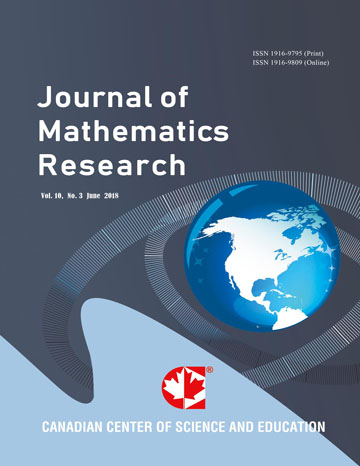Stochastic SIR Epidemiological Model With Two Levels of Severity
- Gerard Kanga
- Jacques Tano
Abstract
In this paper, we develop an epidemic model to analyze the spread of an infectious disease with two levels of severity within a population of varying size. Additionally, we examine the stability of the disease-free equilibrium.
Such a model is suitable for the dynamics of COVID-19 disease spread. If the two types of infected individuals have different recovery rates, then there is no endemic equilibrium; only the disease-free equilibrium will be the subject of our study. We then study both the deterministic model and a stochastic version. The stochastic model is obtained by perturbing the contact rate using white noise. For the deterministic model, we have shown that if the basic reproduction number R_0 < 1, then the equilibrium state is globally asymptotically stable by using Lyapunov function. This implies that the disease will disappear, and the entire population will become susceptible. For the stochastic version, we demonstrate that the system admits a unique positive global solution that exists within a positively invariant domain. Under suitable conditions on the intensity of the white noise perturbations, we prove that the number of infectious individuals converge almost surely exponentially to zero and the disease-free equilibrium of system is stochastically asymptotically stable in the large provided. Finally, we give some numerical simulations to illustrate our theoretical results.
- Full Text:
 PDF
PDF
- DOI:10.5539/jmr.v16n1p16
Index
- ACNP
- Aerospace Database
- BASE (Bielefeld Academic Search Engine)
- Civil Engineering Abstracts
- CNKI Scholar
- DTU Library
- EconPapers
- Elektronische Zeitschriftenbibliothek (EZB)
- EuroPub Database
- Google Scholar
- Harvard Library
- IDEAS
- Infotrieve
- JournalTOCs
- MathGuide
- MathSciNet
- Open policy finder
- RePEc
- ResearchGate
- Scilit
- Technische Informationsbibliothek (TIB)
- The Keepers Registry
- UCR Library
- Universe Digital Library
- WorldCat
Contact
- Sophia WangEditorial Assistant
- jmr@ccsenet.org
